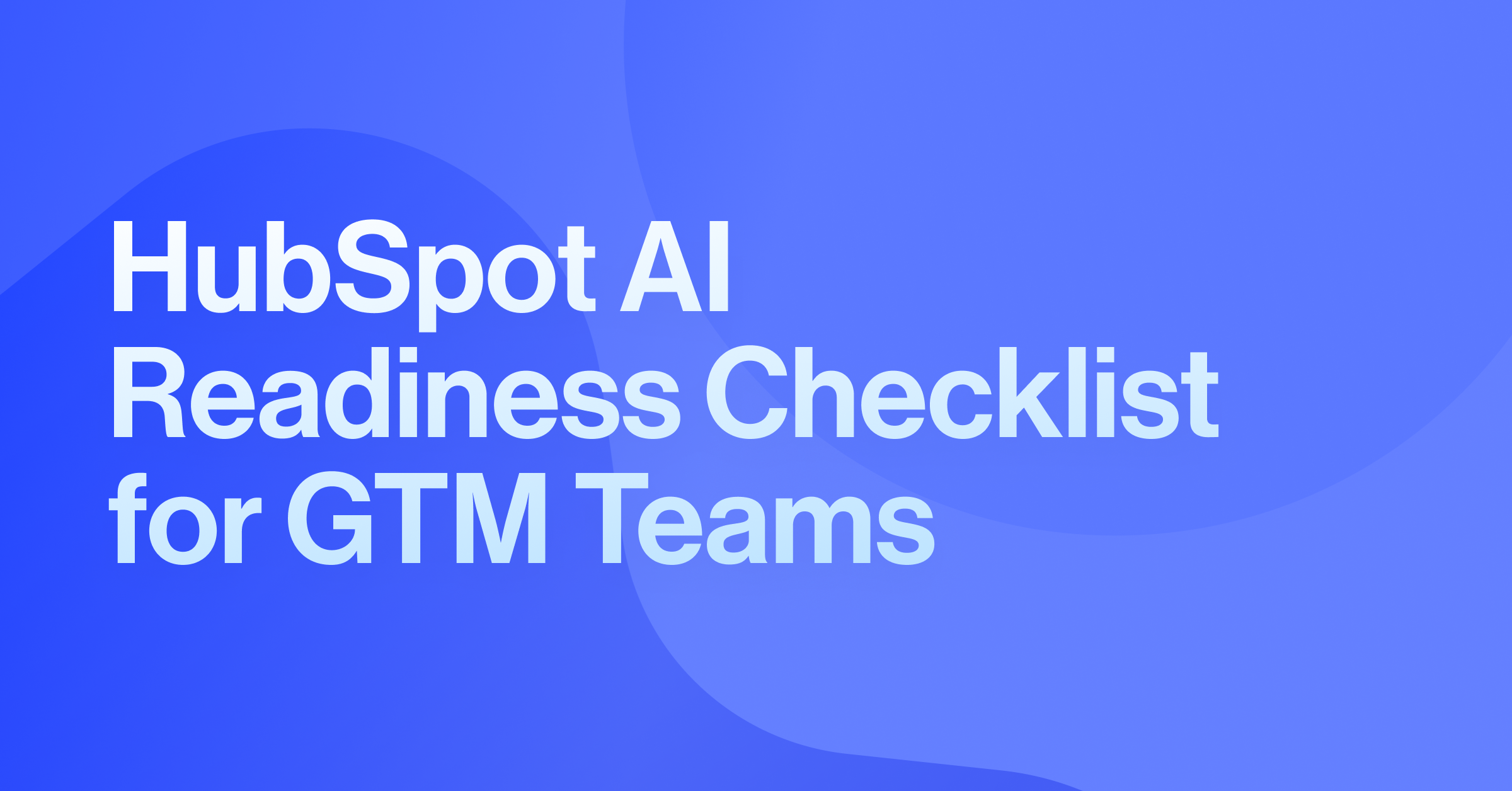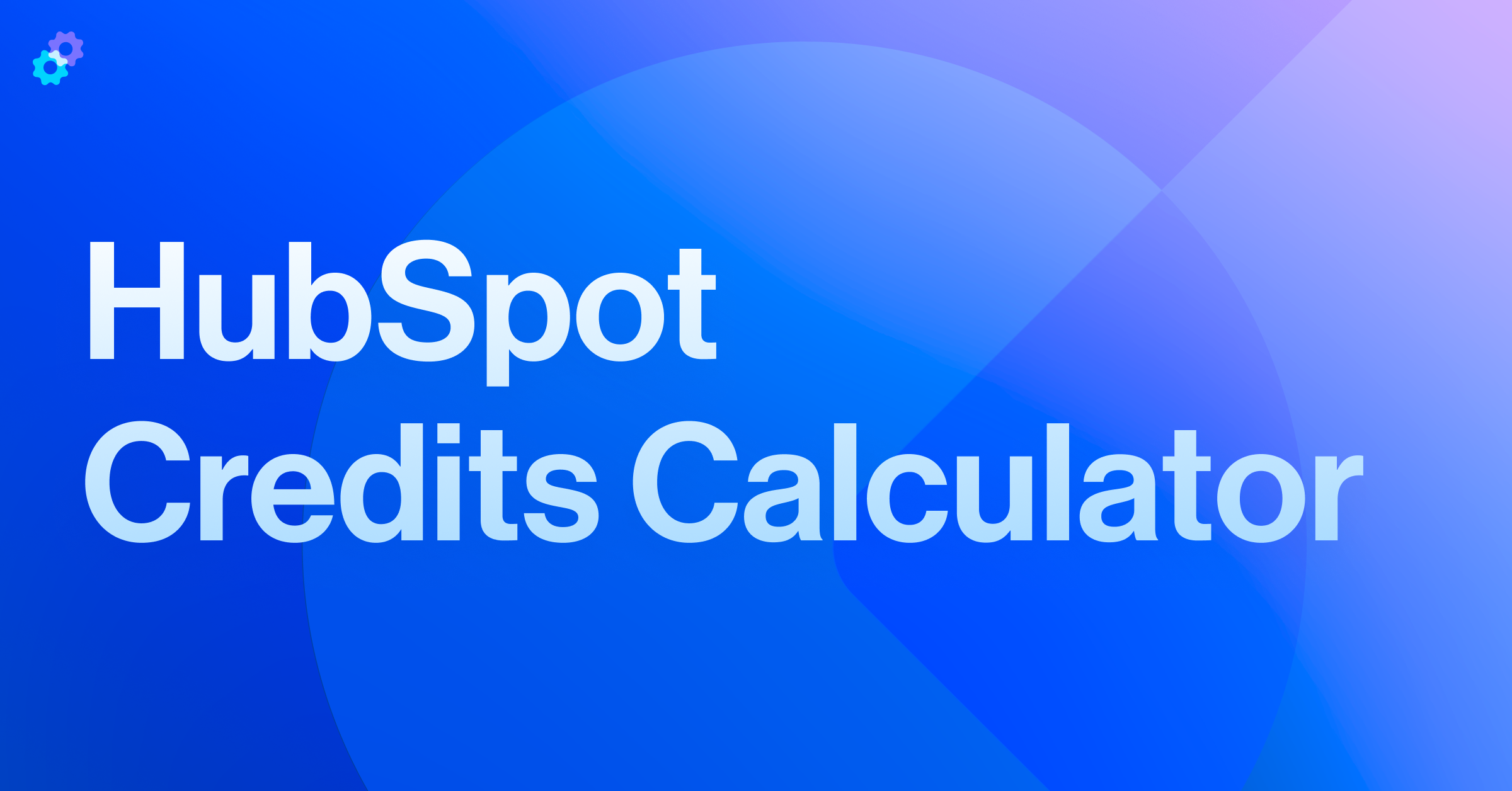Over just a few short years, technology has accelerated at an incredible pace, driven by the rise of generative AI. What once felt experimental is now embedded in the software we rely on every day. AI isn’t a ‘nice-to-have’ anymore. It is built into the platforms we constantly use, from Google Search surfacing AI-generated overviews to CRMs automatically enriching contact records based on data from large language models (LLMs). AI has shifted from optional to essential.
At INBOUND 2025, HubSpot reinforced this reality. With sweeping new AI-powered tools and a bold repositioning as the only platform that unifies all business data, HubSpot has redefined what it means to run a growth platform in the AI era.
For Marketing, Sales, and RevOps leaders, the key takeaway is clear: HubSpot has evolved. And the center of that evolution is Breeze AI.
A Brief History of Breeze AI
HubSpot first introduced Breeze AI at INBOUND 2024, framing it as a new layer of intelligence woven into the HubSpot platform. Breeze consisted of three main components:
- Breeze Copilot – An AI companion that lives across HubSpot. It helps draft content, summarize notes, prepare for meetings, analyze deals, and accelerate everyday tasks by using your CRM context.
- Breeze Agents – Specialized AI teammates trained for specific jobs like customer support, sales prospecting, creating social posts, or content writing.
- Breeze Intelligence – A paid alternative to HubSpot Insights, Breeze Intelligence would enrich your CRM data through an AI-driven dataset consisting of over 200 million buyer and company profiles.
The launch of Breeze marked HubSpot’s first step toward full AI integration into the platform. Instead of treating AI as a bolt-on product, HubSpot positioned Breeze as the connective tissue that would power business processes of the future.
How the AI Landscape Has Evolved Since 2024
Over the past year, AI has gone from an emerging trend to the foundation of many tools we use daily.
- Search and Discovery: Google’s AI overviews and the rise of answer engines have reshaped SEO. With nearly 60% of searches ending in zero clicks, companies can no longer rely on traffic flowing to their blogs.
- Content Creation: AI tools like ChatGPT, Claude, and Gemini are now mainstream for drafting content, social posts, and sales emails. What was once novel is now routine.
- Daily Workflows: From CRMs to social platforms, AI is embedded in the tools employees already use. Smart suggestions, predictive analytics, and automated data capture have become standard expectations.
- Cultural Shift: Buyers themselves are AI-assisted. They research products through chatbots, summarize vendor options with LLMs, and expect personalized interactions instantly.
The implication is clear: if AI isn’t woven into your workflows, you’re falling behind. HubSpot recognized this shift and responded with its most significant product evolution yet.
What’s New in Breeze: INBOUND 2025 Announcements
Let’s take a closer look at what HubSpot Credits are used for today. These tools are powerful, and when used thoughtfully, can enrich your CRM data and power useful automations. Although useful, since these features are pay-per-use, it’s important to understand their mechanics and put proper guardrails in place when implementing them.
Smart CRM
The Smart CRM has quickly become the brain of HubSpot, automatically enriching itself and surfacing insights.
- Self-Generating CRM Data: Automatically captures details from emails, calls, and tickets, turning unstructured conversations into structured CRM records.
- Smart Insights: Surfaces important patterns and recommendations in real time, so teams spend less time digging through call transcripts and notes.
- Data Enrichment: Leveraging publicly available information to fill in missing CRM properties. Updates incorporate external signals, such as company funding, expansions, or layoffs, directly into records. This capability is now available without requiring HubSpot credits and has removed the Breeze Intelligence branding, making it more accessible.
Breeze Assistant
During INBOUND 2025, HubSpot reintroduced Copilot as the new Breeze Assistant, rebuilt from the ground up. The Assistant is designed to work alongside you, understanding the unique context of your business.
What’s new with Breeze Assistant?
- Custom Assistants: You can now create specialized AI experts tailored to your company’s workflows, brand voice, or departmental needs, ensuring the Assistant adapts to your business's unique needs.
- Persistent Memory: The Assistant remembers your preferences and past interactions, becoming smarter and more effective over time.
- Advanced Research: It can conduct deeper research across your CRM and connected data, surfacing insights proactively.
- Expanded Integrations: Breeze Assistant connects seamlessly with Google Workspace, Microsoft 365, and Slack, making it accessible in the tools your teams already use.
- Mobile Access: A new mobile app puts the Assistant in your pocket, enabling productivity and insights wherever you work.
Breeze Agents
Breeze Agents are AI teammates designed to take on specific roles and workflows. At INBOUND 2025, HubSpot spotlighted these agents:
- Customer Agent: Expands beyond ticket resolution to act as a 24/7 concierge, answering customer questions, qualifying leads, booking meetings, and supporting across channels like web, email, Facebook, and WhatsApp.
- Data Agent: Acts as a research specialist, pulling from your CRM, documents, and the web to create smart properties or surface new insights. For example, it can auto-populate competitor data or industry news into your records.
Assistant vs. Agent: In case you’re confused about the difference, the key difference is how they work. Assistants work with you, helping humans accomplish tasks more quickly. Agents work for you, allowing HubSpot users to hand off work by carrying out tasks and processes autonomously.
Breeze Studio & Marketplace
To make agents truly customizable, HubSpot launched Breeze Studio (a canvas for creating custom assistants) and the Breeze Marketplace (a hub to browse, install, and deploy pre-built agents). Together, these capabilities enable businesses to build a custom AI team that aligns with their processes, brand, and goals.
Segments & Personalization
HubSpot evolved its legacy lists feature into Segments, powered by AI. This tool automatically surfaces high-intent groups of contacts and enables personalization across email, CTAs, and landing pages. Marketers can even target contacts with unique profiles of attributes and behaviors at scale, delivering experiences that feel highly relevant.
Marketing Studio
HubSpot introduced Marketing Studio, a collaborative campaign workspace. Teams can input a campaign idea, and AI will generate a complete multi-channel plan with recommended content assets. Marketing Studio allows marketers to plan, create, and launch campaigns in days rather than weeks.
AEO Tools
With search moving from clicks to AI answers, HubSpot launched AI Engine Optimization (AEO) tools. These tools help businesses measure the frequency of their brand's appearance in AI-generated responses and offer recommendations to enhance visibility. It’s SEO reimagined for the AI era.
CPQ
HubSpot also announced an AI-powered Configure, Price, Quote (CPQ) system within Commerce Hub. Powered by Breeze, it can generate personalized quotes from CRM data, draft cover letters, and utilize a Closing Agent to answer buyer questions and streamline approvals in real-time.
How Breeze Has Caused HubSpot to Evolve
Breeze isn’t just a feature update; it has reshaped HubSpot’s entire platform and positioning.
- Unified Messaging: The Fall Spotlight 2025 theme was Unified. HubSpot now positions itself as the only platform that unifies structured, unstructured, and external data to power AI-driven insights.
- Smart CRM as the Core: The Smart CRM is now sold as a standalone product, reflecting its role as the foundation for hybrid human+AI teams.
- HubSpot Credits: A new credit-based model for accessing AI features and data enrichment, giving RevOps leaders more flexibility in allocating AI resources.
- Data Hub: Formerly Operations Hub, now rebranded as Data Hub, a centralized place to unify, clean, and enrich data from all sources.
- Loop Marketing: HubSpot’s new strategic playbook, built for the AI era. Loop Marketing is a strategy that enables teams to put unified data and AI agents into practice, driving continuous growth.
The takeaway: HubSpot isn’t just a marketing tool anymore. It’s an AI-first growth platform where humans and AI collaborate to drive momentum.
In just one year, HubSpot has gone from introducing Breeze AI to re-architecting its platform around it. The result is a unified system where Smart CRM, Data Hub, and Breeze AI agents work together to deliver intelligence, automation, and personalization at scale.
For Go-to-Market teams, this evolution means:
- Less time on manual tasks (data entry, reporting, outreach).
- More time on strategy (personalization, creative campaigns, customer conversations).
- A unified data foundation that makes AI outputs accurate, relevant, and trustworthy.
The AI era isn’t coming; it’s already here. And HubSpot has placed itself at the center of it.
Need help with AI enablement within your CRM? Contact the Pros.







